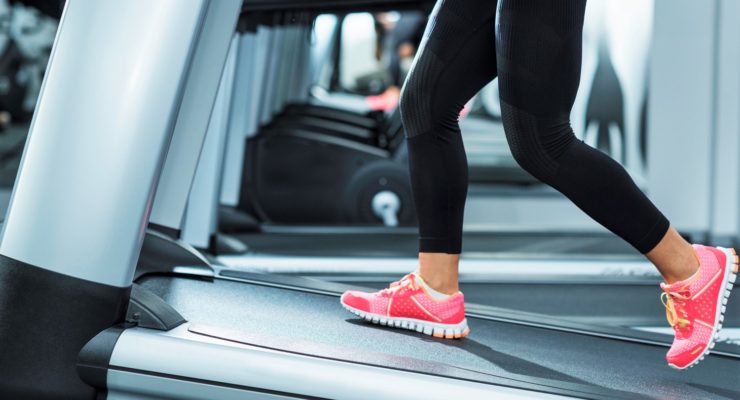6 Strength Training Tips for Beginners
Article posted in: Fitness
Combining strength training with cardiovascular exercise can give your weight loss a powerful boost: In a study where scientists tracked people who did cardio work, strength work or both, the combo group didn’t just lose weight, but they gained muscle—which burns more calories when you’re doing nothing. Body fat doesn’t do that!
And once you’ve lost weight, strength training can help you keep it off: In one study, men who trained with weights for 20 minutes per day had less age-related belly fat gain compared to other men who just did cardio exercise each day.
Strength training also does amazing things for your body, mind and quality of life: According to the American Heart Association, strength training can lower your heart disease risk, improve your heart function, and boost your “psychosocial well-being.” Training your muscles can also improve how your brain works, how productive you are at work, and help you sleep better.
The best part: You don’t need equipment, tons of exercises, or a boatload of information to get started. If you’re new to strength training—or haven’t done it in a long, long time—follow these six tips to safely start getting strong.
1. Warm up!

First thing’s first: A short warmup can help prevent injury. it lubricates your joints with synovial fluid, a kind of “oil” that increases their range of motion. It gets your heart rate up and your blood moving. And it prepares your body and mind for the movements you’re about to do.
That doesn’t mean stretching: The static stretches we learned in elementary school gym class can actually reduce exercise performance and stability during your workout. In one study, people who did static stretches felt 22 percent less stable during a leg workout, and they were able to lift less weight than they normally could.
Instead of stretching, perform a brisk, three to five minute warm up. Walk at an accelerated pace, swing your arms and legs through their full ranges of motion, and do some light calisthenics like jumping jacks, high knee marches and side shuffles. You’re warmed up when you’re literally warm—your heart rate will increase, increasing the temperature of your body and muscles. Then you’re ready for strength training.
2. Do workouts with multi-joint movements.
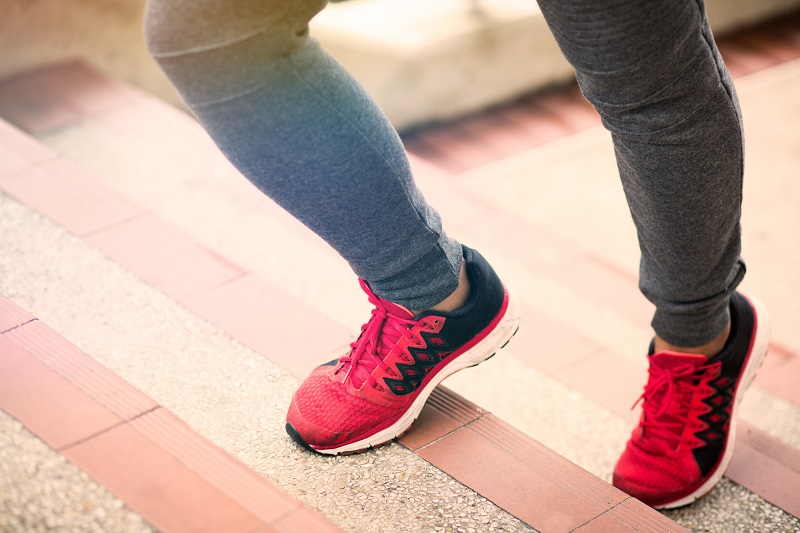
There are hundreds of strength exercises that can increase strength and build muscle. But you don’t need to do them all! Performing movements that use more than one joint at a time—like squats, which bend your hips, knees and ankles, or pushups, which use your elbows, shoulders and wrists—lets you train more muscles at the same time, making your workout more efficient.
Start with these five moves: They’ll strengthen almost every muscle in your body, get your heart pumping and improve your balance.
Exercise 1 – Pushup:
- Assume a classic pushup position, with hands directly beneath your shoulders, your body forming a straight line from head to heels.
- Maintain this rigid body line as you bend your elbows to lower your chest towards the floor.
- Press back to start, maintaining the straight body line.
Exercise 2 – Air Squat:
- Stand with your feet hip-width apart, toes pointed slightly out from parallel.
- Push your hips back to initiate the squat.
- Bend your knees to descend until your thighs are at least parallel to the floor, keeping your chest up and your weight on your heels.
- Keep the weight of your body in your heels and press back to standing.
Exercise 3 – Waiter’s Bow
- Stand with feet hip-width apart, knees slightly bent.
- Push your hips back like you’re opening a door behind you with your butt. This starts the hip hinge.
- Keep pushing your hips back so that your back remains flat until it is nearly parallel to the floor.
- Squeeze your butt to return to standing. Repeat.
Exercise 4 – Lateral Step-up:
- Stand with a stair or sturdy chair to your right.
- Lift your right leg up and place it on the step or chair.
- Stand up on the stair or chair by pressing through your right leg until your right knee is straight, and your left foot meets your right.
- Carefully step back down. Do all of your repetitions on this side, then switch sides and repeat.
Exercise 5 – Wall Stickup:
- Stand facing away from a wall, with your feet about 6 inches away from the wall. Your head, upper back and butt should all be in contact with the wall—and they should stay in contact with it throughout the exercise. Put your arms straight up overhead, with the backs of your hands, elbows and forearms in contact with the wall.
- Now slide your arms down the wall by bending your elbows, keeping your hands, forearms and shoulders in contact with the wall. Keep lowering until your elbows come as close as you can bring them to your sides. (You should feel a strong contraction between your shoulder blades.)
- Pause, then slide your arms back up the wall until your arms are overhead.
3. Every exercise can be made easier. Do the version that works best for you.
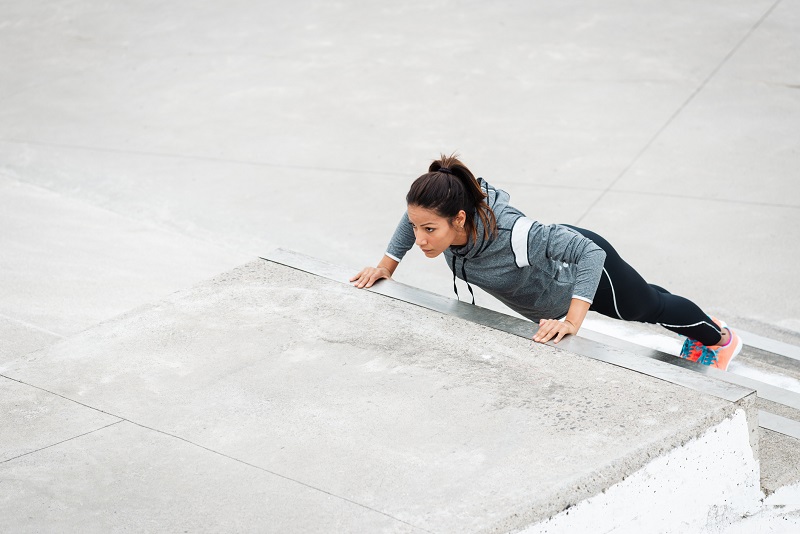
You may not be able to do a squat or a pushup right now—and that’s OK! Struggling through an exercise that you can’t really do because you’re “supposed” to do that move is a recipe for injury. So don’t do it! Almost every exercise, whether it’s one of these five, or any of the other million ways to move your body, can be made easier. Do the version of an exercise that you can perform with perfect form while still feeling a small challenge.
Here’s a way to make four of the five exercises above a little easier. As you feel stronger over time, you can progress to the original instructions.
For the pushup: Start elevated. Put your hands on the second or third step of a staircase. Everything else is the same: hands should be directly beneath your shoulders, your body forming a straight line from head to heels. Just bend your elbows to lower your chest until it touches the step, instead of the ground.
For the squat: Grab a chair. Start with it behind you, and do everything else the same: Push your hips back to initiate the squat, and control your descent until you’re seated. Stand back up, and repeat.
For the waiter’s bow: Just hinge. Imagine you’re holding groceries in front of you, and you need to close a car door behind you using your butt. Bump your butt back to “close the door,” then squeeze your butt to stand back up.
For the lateral step-up: Use a lower step or chair.
4. Your body weight is great as resistance.
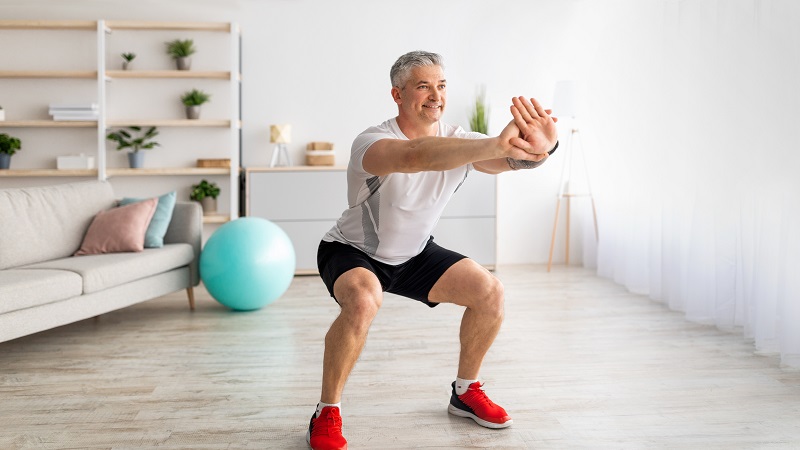
One thing you’ll notice about those five moves: there’s no weights or machines needed. External resistance—from barbells, dumbbells, resistance bands or machines—is a great way to add a challenge, but you can build lots of strength and muscle with moves that only use your bodyweight.
Performing moves without weight also prepares you to eventually use external resistance. So if you love doing squats, for instance, and want to progress to doing them with weight, you’ll have lots of practice doing them without any weight … in a way that’s safe, and performed with perfect form.
5. Two sessions per week is perfect.
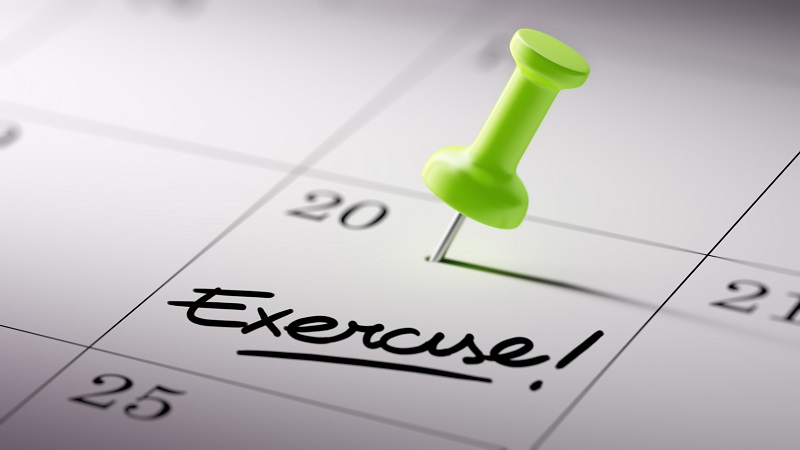
You don’t have to strength train every day: The Centers for Disease Control and Prevention recommends 150 minutes of aerobic exercise per week, and two strength training sessions. Studies back this up as a muscle- and strength-building strategy: In 2016 research review, scientists found that training a muscle group twice per week was better for building muscle than training it one day per week, even if the amount of exercise repetitions done were the same. What that means: Doing 20 pushups twice per week is better than doing 40 pushups once per week.
How much should you do in each of those two weekly sessions? Scientists have found that performing 10-20 “working sets” with a muscle group each week is associated with building maximum strength and muscle. A “working set” means performing enough repetitions of an exercise in each set so that you can only do a few more repetitions. So if you can do eight elevated pushups in a row, a working set would be around five elevated pushups.
Perform five sets of each exercise in this way—leaving a few repetitions in the tank—in each session, resting at least one minute between sets. Do that—five sets of each move—twice per week.
6. Try to do a little more every time, or every week.
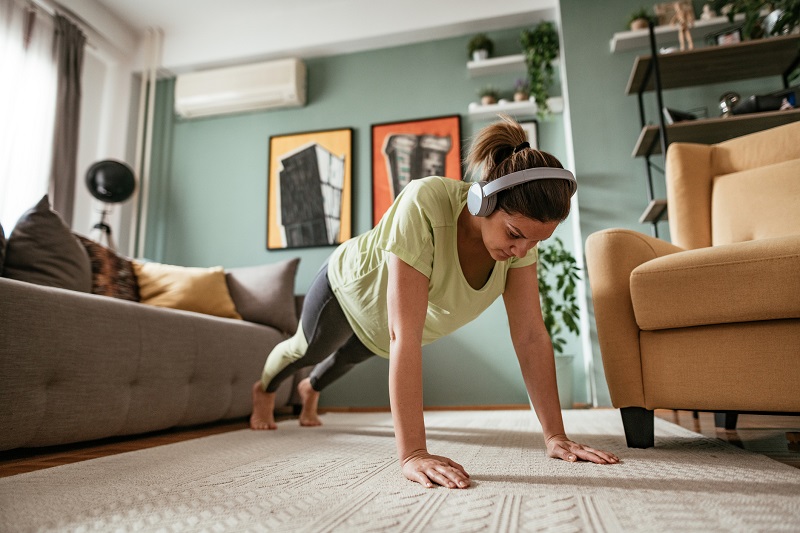
If you do five pushups in every session forever, eventually those five pushups won’t challenge you any more. One of the keys to getting stronger is an idea called “progressive overload,” which basically just means doing more over time.
Keep track of how many repetitions of your exercises you do, and try to do just a tiny bit more each week—that could mean just one more squat or one more elevated pushup each week. If you did five sets of five squats last week, for example, try to do four sets of five and one set of six this week. This type of progression will ensure that your strength training sessions continue to train your strength—meaning you’re getting stronger over time.
*Always speak with your healthcare provider before starting a new exercise routine.






